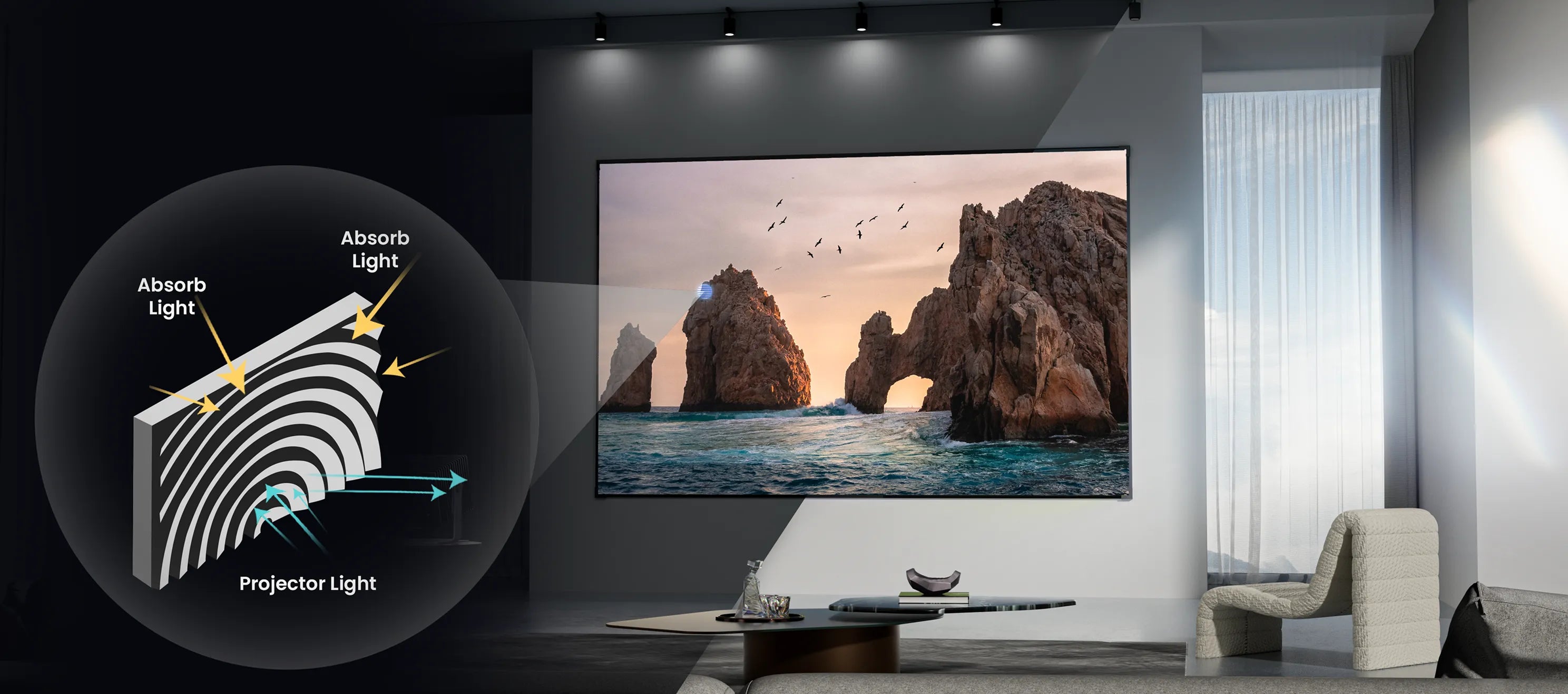Lumens
Lumens measure the total amount of visible light emitted from a source. In projectors, lumens indicate the brightness of the projector's light output. A higher lumen value generally means a brighter projector, which is beneficial in well-lit environments.
For example:
- Home theater projectors: Typically have between 1,000 and 3,000 lumens.
- Business or classroom projectors: Usually range from 3,000 to 5,000 lumens.
- Large event projectors: Often exceed 5,000 lumens.
- Cinema theater DCP projectors: Typically range between 10,000 and 30,000 lumens.
However, a higher lumen rating does not always guarantee better image quality. Factors such as contrast ratio, color accuracy, and screen type also play crucial roles.
How Is Lumen Output Measured?
Lumens are typically measured using a light meter directed at the projector's lens. Since light meters measure lux (illuminance in lumens per square meter), the total lumen output can be calculated using this formula: Lumens = lux × screen area (in square meters)
ANSI Lumens
ANSI lumens refer to a standardized method for measuring projector brightness, established by the American National Standards Institute (ANSI). In this method, a white image is projected, and brightness is measured at nine specific points on the screen. The average of these measurements provides the ANSI lumen rating, ensuring consistent and reliable comparisons between different projectors.
How Are ANSI Lumens Measured?
To determine ANSI lumens, a light meter is used to measure lux at multiple points on the screen. The final calculation is: ANSI Lumens = Average Lux × Screen Area (in square meters)
ISO Lumens
ISO lumens are based on standards set by the International Organization for Standardization (ISO). Like ANSI lumens, they provide a standardized measurement for projector brightness. While both methods aim for accuracy, their test procedures may slightly differ. Some manufacturers prefer ISO lumens, but both standards allow consumers to compare projectors effectively.
How Are ISO Lumens Measured?
ISO lumens are measured similarly to ANSI lumens, using a light meter. The lux values are recorded and converted into lumens using the formula: ISO Lumens = Average Lux × Screen Area (in square meters)
The key difference between ISO and ANSI lumens lies in the specific methodology and environmental conditions during measurement.
Lux
Lux measures illuminance, meaning the amount of light falling on a surface per unit area. One lux equals one lumen per square meter. In projector specifications, lux describes how much light reaches the projection surface. However, since lux values depend on distance, they are not as commonly used as lumens.
How Is Lux Measured?
Lux is measured with a light meter. Since lux values change with distance from the light source, measurement distance must always be specified for accurate comparisons.
Foot-Lamberts (fL)
Foot-lamberts measure the brightness of the reflected image from a projection screen, accounting for both projector light output and screen reflectivity (gain). The formula is:
For comfortable viewing, cinema projection brightness is recommended to be 14–16 fL in a dark room. For home theaters, 12–30 fL is generally considered good, depending on ambient light and wall reflections.
How Are Foot-Lamberts Measured?
Foot-lamberts are typically measured using a colorimeter or spectrometer, which analyzes the light reflected from the screen to determine brightness and color accuracy.
Nits
Nits measure luminance, the brightness of light emitted or reflected from a surface, expressed in candelas per square meter (cd/m²). Nits are commonly used to describe the brightness of self-luminous screens (e.g., TVs and monitors), but they can also apply to projection screens. Screen gain and projector lumens determine the number of nits.
How Are Nits Measured?
Nits are measured using a colorimeter or spectrometer, similar to foot-lamberts. These tools ensure precise screen brightness measurements for accurate calibration and optimal viewing.
Conversion Formulas Between Light Units
If you know how the different light units relate to each other, you can compare brightness measurements effectively. Here are some useful conversion formulas:
- Lumens = lux × screen area (in square meters)
- Lux = Lumens ÷ screen area (in square meters)
- Foot-Lamberts = (lumens of projector × gain of screen) ÷ area of screen (in square feet)
- Nits = Foot-Lamberts × 3.426
- Foot-Lamberts = Nits ÷ 3,426
- 1 foot-lamberts ≈ 3.426 nits
These formulas allow easy conversions between different light measurement units.
Conclusion
When evaluating projectors, consider the following brightness measurements:
- Lumens: Measures total light output (typically with a light meter).
- ANSI & ISO Lumens: Provide standardized brightness comparisons.
- Lux: Measures light intensity on a surface (requires specifying distance).
- Foot-Lamberts: Measures perceived brightness on the screen (considering reflectivity).
- Nits: Represents luminance, affected by both projector and screen properties.
Understanding these terms and their measurement methods will help you make an informed decision when selecting a projector that delivers optimal brightness and image quality for your viewing environment.






